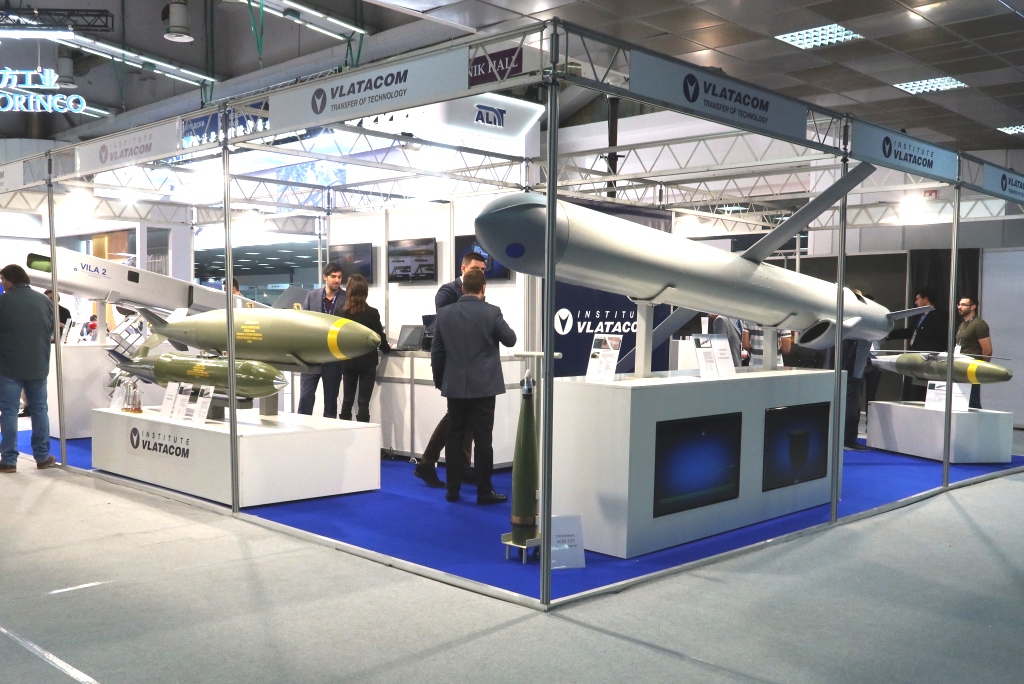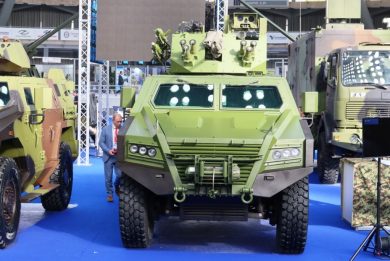
Partner 2023 – Viatacom Institute developing vILA 1 and vILA 2 long range loitering munitions
At Partner 2023 in Belgrade Viatacom, a private research institute, exhibited the mock-ups of two long range loitering munitions, the vILA 1 and vILA2, based on similar modules but aimed at different use, from surface and from the air
Certified as a Research and Development Centre by Serbia’s Ministry of Science in 2011, the Viatacom Institute is fully involved in military R&D, the institution bringing projects up to the testing phase, while production is then assigned to national industries. The centre is active in different domains ranging from computer technology to aerodynamics, to mention a few, and is therefore able to cope with the multiple aspects of the development of a new long range cruise missile/loitering munition, such as those shown in mock-up at the Belgrade exhibition.

The difference between the two weapon systems is mostly in their use; the vILA 1 (for Viatacom Integrated Loitering Ammunition) is designed to be surface launched, either from a land-based system of from ships, while the vILA 2 is to be used on board combat aircraft.
The core elements of the missile, the guidance system and the warhead, are common, albeit some control software might have to be partially rewritten. The vILA missiles fly to the target area exploiting inertial navigation, GNSS and radar altimeter for guidance. EDR On-Line understood that the module on which the Institute is concentrating its efforts is the one dedicated to the final leg, when the system starts loitering over the target area in search of its target.

Here an optoelectronic system is activated, which carries out autonomous target recognition thanks to Artificial Intelligence-based algorithms. Of course the man-in-the-loop concept is respected, a two-way data-link allowing the operator at the ground control station to validate the system target choice before the vILA switches to the attack phase. The vILA loitering munitions carry a 300 kg warhead that can be selected among different types. The vILA 1 is fitted with a vAF-M17//vFI.17 fuse, while no such information was provided for the vILa 2.
In the vILA 1 configuration the weapon has a circular section and is launched from a cylindrical canister that can be mounted either on an 8×8 wheeled chassis or integrate don a ship. Without booster the missile/loitering munition is 5.5 metres long without booster, while wings that open after launch have a span of 2.7 metres. Its propulsion system is based on a turbofan or turbojet engine that is activated following the booster-assisted launch, cruise speed being Mach 7.5. As for altitude, this can go from 50 metres up to over 7,000 metres according to data provided.

As for the vILA 2, the body is totally different having a near rectangular section to allow easier integration on combat aircraft, the length is reduced to 4.5 metres, wings remaining the same as well as operating altitude, only cruise speed being slightly higher, between Mach 0.75 and 0.8. Both ordnance have a range short of 300 km to which loitering time must be added. As for weight at launch these were not declared, exact figures being not yet available at this stage of development, however EDR On-Line understood that the vILA 1 should be around 1,000 kg while the vILA 2 weight is estimated at 750-800 kg.
According to information obtained at Partner 2023 the two systems are considered at TRL 5/6, and Vlatacom plans o have them fully developed in two-three years time.

Beside the vILA the Institute is also developing awing assisted guidance kit for Mk aerial bomb series. The guidance kit is based on an inertial platform and the GNSS signal, algorithms being developed by Viatacom which also produces the wing kit installed to the bomb. This allows increasing range from the release point up to over 80 km, depending on release altitude, Viatacom declaring an accuracy under 10 metres with INS and GNSS and under to metres with only the inertial guidance.
Photos courtesy P. Valpolini



